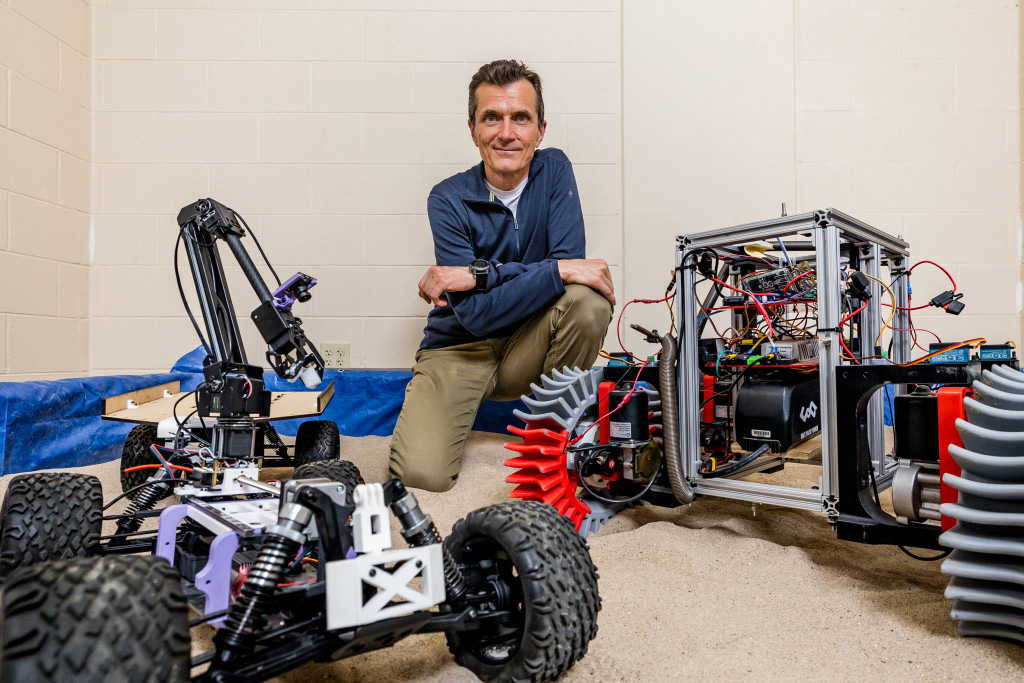
Negrut and his collaborators determined that Earth’s gravity pulls down on sand much more strongly than the gravity on Mars or the moon does. Joel Hallberg, College of Engineering
On the moon, the gravitational pull is six times weaker than on Earth. For decades, researchers testing rovers have accounted for that difference in gravity by creating prototypes that are a sixth of the mass of the actual rover. They test these lightweight rovers in deserts, observing how they move across sand to gain insights into how they would perform on the moon. However, this approach overlooked the pull of Earth’s gravity on the desert sand.
Through computer simulation, Dan Negrut, a UW professor of mechanical engineering, and his collaborators determined that Earth’s gravity pulls down on sand much more strongly than the gravity on Mars or the moon does. On Earth, sand is more rigid and supportive, reducing the likelihood it will shift under a vehicle’s wheels. But the moon’s surface is fluffier and therefore shifts more easily. Rovers have less traction, which can hinder their mobility.
The researchers’ discovery resulted from their work on a NASA-funded project to simulate the VIPER rover, which was planned for a lunar mission. The team leveraged Project Chrono, an open-source physics simulation engine developed at UW–Madison in collaboration with scientists from Italy. This software allows researchers to quickly and accurately model complex mechanical systems.
The benefits of this research also extend well beyond NASA and space travel. Chrono has been used by hundreds of organizations to better understand complex mechanical systems, from precision mechanical watches to U.S. Army trucks and tanks operating in off-road conditions.
“It’s rewarding that our research is highly relevant in helping to solve many real-world engineering challenges,” Negrut says. “It’s very unusual in academia to produce a software product at this level.”
Published in the Winter 2025 issue



Comments
No comments posted yet.